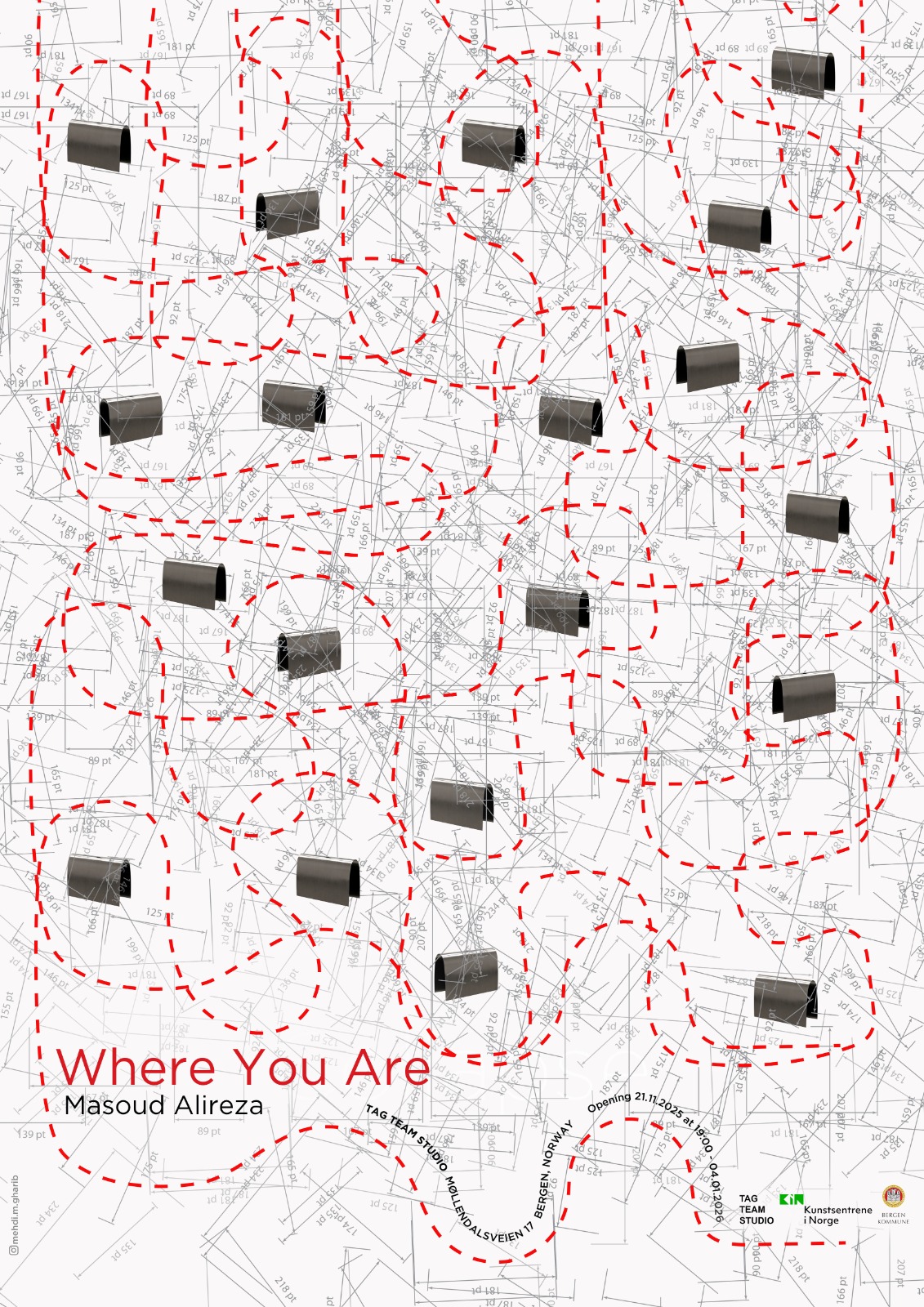Upcoming
Archive
Arbeid pågår
About
Publications
Open Call
Visit
TAG TEAM RADIO
MØLLENDALSVEIEN 17
BERGEN, NORWAY
CONTACT:
morten at tag-team.no
POST @ TAG-TEAM . NO
SIGN UP FOR NEWSLETTER here
Opening hours:
Lør-Søn: 12.00-17.00
Other weekdays by appointment
21.11.25 – 04.01.26

Opening: Friday 21. nov 19.00
Masoud Alireza makes drawings. Graphite on paper. With a pencil. Seen as a process, it is formal and principally traditional. For hours, he sits and draws with his pencil on a piece of paper. In the end, the paper is covered, totally. The paper has become black, or rather, that deep dark grey of the graphite. The grey covers the paper all over, maybe even on both sides. In this process, the paper has transformed into another material; it has gained a sculptural quality. But in principle, it is still a drawing: Pencil on paper. As simple as that.
The sheets of paper are often large, very large. Transgressing every notion of a traditional drawing, the sheets take on sculptural, spatial qualities. They become objects in space, dividing and changing the rooms wherein they are installed. Conceptually they are still drawings, but here it might be right to use the term ‘in an extanded field’. Rosalyn Krauss wrote the very influential text “Sculpture in the Expanded Field” in 1979, arguing for a new format of sculpture that was situated within spatial and cultural contexts. In a similar way, we can see the drawings of Masoud Alireza as ‘drawings in the expanded field’. In all their minimalism, the drawings somehow beg for associations, a situated, associative meaning.
As the drawings are often large-scale sheets of monochrome paper, the framing and the hanging of the works become important. As with the drawing technique, Masoud is quite strict and formalistic with the methods and techniques he uses for framing and hanging. Either the drawing is framed or hung directly on the wall, the materials of the frame or the mounting become important parts of the visual repertoire of the drawing. The framing / mounting merges with the drawing, and it becomes one object. In the larger scale drawings, the hanging becomes even more striking; here, the drawing hangs in space, suspended from the ceiling in thin, almost invisible strings. The heavy look of the dark, metallic sheets is here juxtapositioned by the flowing, hanging in mid-air. The drawing seems both heavy and light at the same time.
In the new installation, Where You Are, Masoud is showing at Tag Team; this juxtaposition is taken to an even further extreme. He is now working with ‘magnetic hangers’, designed to hang drawings without pins. The installation consists of a number of A3 drawings, black, metallic on both sides of the paper. The A3 sheets are now suspended in mid-air in the middle of the room, flying between the magnets. This suspension gives a double experience; on one hand, it seems like a miraculous levitation, how can these dark, heavy sheets of paper actually float in space? On the other hand, the composition exudes a very precious fragility – even an abrupt movement by one of the visitors to the exhibition will cause the air in the room to move and might be the end of the levitation. As the exhibition carries on, one by one, the flying sheets of paper will drop to the floor, and in the end, the whole thing might become a composition on the floor.
The basic beauty of the media drawing is to always be a sketch, an outline for something bigger. In this sense, a drawing always points to something outside of itself. In Masoud's case, it is important that these larger meanings are not implicit in the work itself, and it is significant that Masoud himself also rejects any speculations of what the drawing might mean in a more symbolic or poetic sense. His work is purely formal, and it is up to us as viewers to create each our situated meaning of the work.
Frans Jacobi


